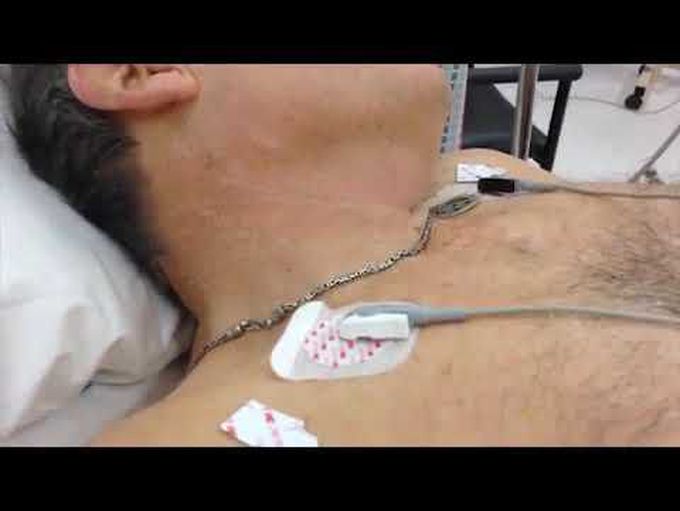


Cannon A Waves
A 65-year-old man presented to the emergency department with an abrupt onset of heart palpitations and dyspnea during the previous hour. The patient had a history of three similar episodes but had no other known conditions and did not regularly take any medications. On physical examination, he was afebrile, his blood pressure was 125/85 mm Hg, and his pulse rate was 110 beats per minute. Examination of the jugular venous pulsation showed cannon atrial (A) waves (Video). Evaluation by means of 12-lead electrocardiography showed supraventricular tachycardia with the presence of notching in the terminal portion of the QRS in V1 (Panel A, arrow). The administration of adenosine terminated the tachycardia (Panel B). His vital signs remained stable as his symptoms resolved and the heart rhythm returned to double jugular venous pulsation. During an electrophysiological study performed electively as an outpatient procedure 2 weeks later, atrioventricular nodal reentrant tachycardia with central atrial activation and a short ventricular–atrial interval was induced. The patient subsequently underwent slow-pathway ablation.Cannon A waves occur when the right atrium contracts against a closed tricuspid valve and can be seen in atrioventricular nodal reentrant tachycardia, complete heart block, and ventricular tachycardia. At follow-up visits at 3 months and 12 months, the patient reported having had no recurrence of symptoms.

